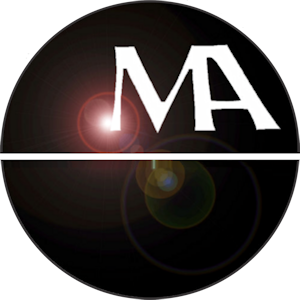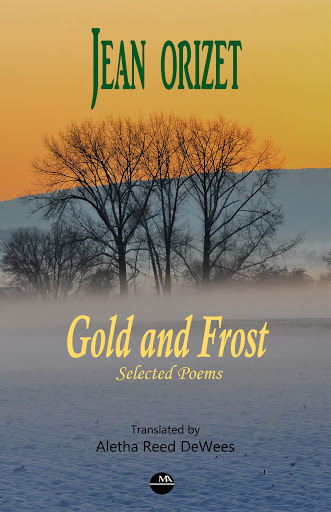Jean Orizet
Gold and Frost (eBook)
Selected Poems
Translated by
Aletha Reed DeWees
Available for Pre-Order
This item will be available on October 15, 2016.
By Doris McGinty Davis
The collection in this poetry volume, Gold and Frost (L’or et le gel), which consists of four parts, poses the question of survival, life after the loss of something precious, in the various strata of that life, which is increasingly threatened by the materialistic, technological world. The first section of this book examines the primal elements of earth, fire, air, and water, rnetonyrnically seen as Man, Woman, Tree, Insect/Bird, and Sea. As these elements of life are being eroded into fragments during the latter twentieth century, the poet wonders about their viability and that of his poetic imagination, which alone has the capacity to furnish a continuum for those elements. Like these elements, his poetic consciousness is threatened by the ice flow of sterility, which must be broken up. The second section. "Dynamiter la source" ("Dynamite the spring"), addresses this problem.
Jean Orizet
 As "the sea erodes the glacial floe" with its salt, so the poet must dynamite the clocked spring of his poetic imagination, clearing it of all detritus, releasing the living water of poetry, leaving the poet free to recreate the world and its genesis, as seen in the third section, "Fragments dun oratorio" ("'Fragments of an oratorio "). The fourth section deals with a privileged place, "Venise" ("Venice"), where water, like the fertility of the poetic imagination, is once again the dominant force in the technologically fragmented world.
As "the sea erodes the glacial floe" with its salt, so the poet must dynamite the clocked spring of his poetic imagination, clearing it of all detritus, releasing the living water of poetry, leaving the poet free to recreate the world and its genesis, as seen in the third section, "Fragments dun oratorio" ("'Fragments of an oratorio "). The fourth section deals with a privileged place, "Venise" ("Venice"), where water, like the fertility of the poetic imagination, is once again the dominant force in the technologically fragmented world.
How does Orizet define the position of the poet in the fragmented world with which he has chosen to interact') The poet is caught between "the diluvian pronouncement" and "the wilderness’ cracked seal."
Et nous, les poétes qui survivons a I’annee, comment
placer notre parole entre la phrase diluvienne et le
signe craquelé du désert,
comment habiter nos fronts opposés. nos regards éclarés
face au blanc-noir des certitudes?
How can we, poets who survive from year to year.
impose our word between diluvian pronouncement
and the wilderness’ cracked seal.
how inhabit opposing brows, confronting gazes shattered
by black-white of certitudes?
Thu the poet establishes a tension between the flowing fertility of his imagination and the cracked sterile glaze caused by the technological world, which, on the surface, is composed of black and white certitudes, void of mystery and beliefs "unproven." It is a world that is breaking up into bits and pieces- fragments.
Orizet’s awareness of a fragmented order is reflected in his style, in the terse, rapid-fire outbursts of his language, comparable to the staccato sounds of electronic computers. In such language a bird in ravaged nature becomes visibly and auditorily broken in the torrent of harsh consonantal sounds of a lapidary-like poem: "l’oiseau brisé/piéte parmi les bees déclats/." ("the bird savaged/ steps through splintered beaks/. ")
In an alternating dense prose poem, the prancing of the North Sea stings through the zebra-like zig-zagging marked by the alternation of hard and soft sounds: "Caracolant sous arc-en-ciel, la mer du Nord a des allures de zébre." ("Capering under rainbow, the North Sea prances like a zebra.") In such a way does the language of Orizet recreate the brittleness of the dichotomy he sees between a disintegrating civilization and the power of poetic language. However, paradoxically, it is through his poetry that Orizet must create the illusion of continuity, or survival in a fragmented world.
To survive and poetize in this world of disintegration, Orizet must maintain his distance from the technological world by playing with language. Ironically, Orizet seizes the very terms of materialistic society, turns them against that society, and thus establishes a coherent, dialectic pattern between technology and fragile nature, between the macroscopic and the microscopic. Such a pattern, follows that of the imagination of a child who makes miniatures of the gigantic shapes of the adult world in order to protect himself. Thus Orizet concentrates upon the "little" things in nature in order to distance himself from
the giant of technology. He accomplishes this through the use of the macroscopic terms of technology to describe the minute details of nature (a flower with petals of pitch).
As Orizet weaves this pattern of the reduction of the size of technological values by concentration on the minute, the reader is reminded of the weave in the inverse or negative pattern of the warp and woof found in the underside of woven material. In fact, Orizet even speaks of "la trame" ("the weave") of his poetry, thus emphasizing the process of inversion. The inversion is further structured by the use of aphorisms, the cross-wise fusion of earth and water, puns, play on words, and semantic allusions: all of which generate, often arbitrarily, an indefinite multiplicity of images.
As a result of this playful manipulation, Orizet is in reality detached from the materialistic world, present only in his imaginary time/space. From such a privileged viewpoint, he can observe all the marvelousness brought about by his poetic imagination. In that privileged zone, or "entre-temps" ("meanwhile"), the poet, similar to the child and his unfettered imagination, never feels threatened, for with a blink of his poetic eye, he can instantly transform an image into one or many images.
What is the nature of the images that make up the weave of the material from which Orizet creates his imagery? Woven from the accidental to which the poet/child has recourse, the images attain a certain instantaneous spontaneity and vivacity, even when they satirize the comfortable, materialistic life as a "ripe red apple existence." Often the images are elliptic as they mock the materialists by presenting them as mere silhouettes without dimensions except their bare stick figures with bulging stomachs and blank faces. These images resemble cut-outs pasted in collage fashion on flat surfaces. The literary process (similar to the painting techniques of Kandinsky?) appears semi-automatic and seems to establish Orizet's images somewhere between surrealism and realism.
Often these images seem to be naive, amusing ideograms which may or may not lead to the cosmic. Images tumble like bits of sparkling glass on the flat surface: flowers with petals of pitch, steely needles of sun's rays, the world globe scarred with tar and asphalt, male semen spewed forth as a crystalline substance. Often the images seem to be hieroglyphic in nature. rooted in some sort of human pre-consciousness: the "Toi" ("You") of Santa Cruz de Tenerife whose pregnant shape, like that of the woman, hides the legend of lost youth.
On the other hand, in Mira-like fashion, Orizet's images seem over-realistic and border on the hallucinatory. Poetic inspiration is seen in medical terms as "the lung" whose "elan" leaves the poet and rises in parabolic traces to steal, pirate-like, the sky; the "lung" whose breathing forces more oxygen into the blood stream, making the blood clearer, thinner, more apt to absorb the air (the world).
The metaphoric eye of poetic consciousness, used in traditional terms, becomes a biological eye whose fluid has been "gummed up" by pollution and becomes transformed into laminated metal. Its round shape resembles a traffic circle filled with all the detritus caused by the traffic of technology. The traditional poet with a blank metallic stare is reduced in size to a tole-eyed Tom Thumb. This reduced image seems to leave the poet/child no way out of his imaginary comer. As a result, the hallucinatory image changes into another, which takes on the configuration of its technical surroundings by mimicking them.
During this process of child-like mimesis, the eye of the poetic consciousness once again becomes a biological eye, whose fluid, however, is acetylene, a chemical term to describe colorless, gaseous hydrocarbide found in torches that solder metallic surfaces. Hallucinatory is the resulting image of an "eye-torch," ready to fuse poetic equivalencies between poetic imagery and the metallic technological world.
Such images shock and grate on the reader's sensitivity and often bewilder him in their plethora of rapid changes. As a result the reader risks losing himself in the multiple semantic allusions that seem to spin crazily off of each other: allusions that are known only to the poet and to those who have read his entire works.
But there is reconciliation brought about by the elliptic, collage-like, hallucinatory images that cavort on the flat surfaces of the poems. Their reduplication, the schema of inversion in the "entre-temps" ("the meanwhile") lead to a temporal repetition. Indeed, Orizet playfully recreates this repetition in the various seasons by a cyclical movement. It is as if the poet were greatly influenced by the theories of Klee, who wrote, "... I sense a formula for man, animal, plant, earth, fire, water, air, and all circling forms at once."
Such a formula would reconcile all the diverse elements of the finite and the infinite in an endless act of recreation. The literary formula for a reconciliation of the opposites of Orizet’s world (technology and nature) is found in the privileged middle space of the volume, as the visual symbol of the shell. "Nautilc" ("Nautilus").
It is the child/poet's listening post for the resonance of the "secret deeps." Its spiral is known to be important in the iconography of cultures whose thought revolves around the myth of the equilibrium of opposites. It is the aquatic symbol of woman. Within its structure, spiral and whirlpool arc reconciled as well as jet propulsion (technology) and free fall (poetry). Although its very internal structure seems to be in a state of static growth, it never changes its outward form. It is the symbol of permanence in change. It is the symbol of the intimate secrets of the poetic imagination, as seen in Niveaux de survie.
Niveaux de survie is one of the latest steps in the development of the poetry of Jean Orizet. If his first volume, Errance, was the laboratory where the poet experimented with all word forms and where intertextual references abound, this volume is more finely honed, more elliptic in thought. In fact, its poetry doesn’t lend itself easily to analysis, because every word is so charged with meaning that the original meaning often seems to disappear in a surfeit of images, each of which has its own networks which in turn interweave. The reader is reminded of the words of Mallarme, who states in his "Dictionary," "... Language charged with expressing all the phenomena of Life, borrows something from it; it lives… "In such a way, Orizet’s language has a life of its own, as each new set of poetic circumstances sets up its own linguistic variants with their own reflections.
The poetry of Jean Orizet, susceptible to change in circumstances, becomes existential and authentic, as the poet lives his poetry in an atmosphere of constant change. The seigniorial metaphor for reconciliation, the castle, of Erranee becomes the many-chambered nautilus. The "passerelles" ("foot-bridges") of the "entre-temps" ("the game of the meanwhile") of Errance become the jammed traffic circle of Niveaux.
Nature and humanity have been flayed by technology and the "ripe red apple," comfortable life. Yet survival for the world will be in the poetry of those who seek "the uncertainties," the "unprovable beliefs": in the simple joy of being. For even when pessimism enters the poetry of Orizet, joy is reflected in the gentle, refined, elegant, child-like humor that permeates his works. Such in brief is the esthetic quest of Jean Orizet in Niveaux de survie.


Reviews
There are no reviews yet.